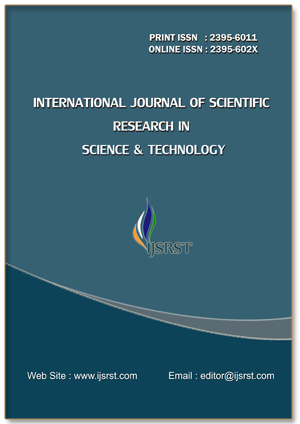Ensemble Deep Learning for Enhanced CT-Scan Kidney Stone Classification
DOI:
https://doi.org/10.32628/IJSRST2512359Keywords:
Ensemble Learning, VGG-16 Fine-Tuning, Kidney CT-Scan, Medical Image Classification, Kidney Stone DetectionAbstract
Accurate classification of kidney conditions from CT-scan images is critical for timely diagnosis and treatment. This study presents an ensemble deep learning approach leveraging fine-tuned VGG-16 architecture for enhanced classification of kidney CT scans into four distinct categories: cyst, normal, stone, and tumor. The proposed model integrates transfer learning and layer-wise fine-tuning of the VGG-16 network, optimizing the final 20 layers to extract high-level, domain-specific features. Ensemble techniques are employed to boost model robustness and minimize variance, combining predictions from multiple fine-tuned instances to achieve superior generalization. A dataset of annotated CT-scan images was preprocessed using normalization and augmentation strategies to improve model performance and prevent overfitting. Experimental evaluation demonstrates a classification accuracy of 96%, significantly outperforming traditional single-model baselines. The model’s effectiveness in distinguishing among clinically relevant kidney conditions makes it a valuable tool for computer-aided diagnosis (CAD) systems. Additionally, the model exhibits strong consistency across all four classes, with minimal confusion in challenging cases such as differentiating cysts from tumors. The promising results highlight the potential of fine-tuned ensemble CNNs in medical image classification and underscore the importance of model interpretability and validation in clinical applications. Future work includes real-time deployment and integration with radiology workflows.
📊 Article Downloads
References
Asif, Sohaib, et al. “An Optimized Fusion of Deep Learning Models for Kidney Stone Detection from CT Images.” Journal of King Saud University - Computer and Information Sciences, vol. 36, no. 7, 2024, p. 102130, https://doi.org/10.1016/j.jksuci.2024.102130.
Chaki, Jyotismita, and Aysegul Ucar. “An Efficient and Robust Approach Using Inductive Transfer-Based Ensemble Deep Neural Networks for Kidney Stone Detection.” IEEE Access, vol. 12, no. March, 2024, pp. 32894–910, https://doi.org/10.1109/ACCESS.2024.3370672.
Pande, Sagar Dhanraj, and Raghav Agarwal. “Multi-Class Kidney Abnormalities Detecting Novel System Through Computed Tomography.” IEEE Access, vol. 12, no. February, 2024, pp. 21147–55, https://doi.org/10.1109/ACCESS.2024.3351181.
Manjunatha, D., et al. “Kidney Stone Detection Using Ultrasonographic Images by Support Vector Machine Classification.” Nanotechnology Perceptions, vol. 20, no. S2, 2024, pp. 93–106, https://doi.org/10.62441/nano-ntp.v20iS2.8.
Ahmed, Fahad, et al. “Identification of Kidney Stones in KUB X-Ray Images Using VGG16 Empowered with Explainable Artificial Intelligence.” Scientific Reports, vol. 14, no. 1, 2024, pp. 1–14, https://doi.org/10.1038/s41598-024-56478-4.
Gulhane, Monali, et al. “Integrative Approach for Efficient Detection of Kidney Stones Based on Improved Deep Neural Network Architecture.” SLAS Technology, vol. 29, no. 4, 2024, p. 100159, https://doi.org/10.1016/j.slast.2024.100159.
Lopez-Tiro, Francisco, et al. “On the In Vivo Recognition of Kidney Stones Using Machine Learning.” IEEE Access, vol. 12, no. November 2023, 2024, pp. 10736–59, https://doi.org/10.1109/ACCESS.2024.3351178.
Gonzalez-Zapata, Jorge, et al. “A Metric Learning Approach for Endoscopic Kidney Stone Identification.” Expert Systems with Applications, vol. 255, no. Dl, 2024, pp. 1–15, https://doi.org/10.1016/j.eswa.2024.124711.
Lopez-Tiro, Francisco, et al. “Boosting Kidney Stone Identification in Endoscopic Images Using Two-Step Transfer Learning.” Lecture Notes in Computer Science (Including Subseries Lecture Notes in Artificial Intelligence and Lecture Notes in Bioinformatics), vol. 14392 LNAI, 2024, pp. 131–41, https://doi.org/10.1007/978-3-031-47640-2_11.
Tahir, Fouad Shaker, and Asma Abdulelah Abdulrahman. “Kidney Stones Detection Based on Deep Learning and Discrete Wavelet Transform.” Indonesian Journal of Electrical Engineering and Computer Science, vol. 31, no. 3, 2023, pp. 1829–38, https://doi.org/10.11591/ijeecs.v31.i3.pp1829-1838.
Kilic, Ugur, et al. “Exploring the Effect of Image Enhancement Techniques with Deep Neural Networks on Direct Urinary System (DUSX) Images for Automated Kidney Stone Detection.” International Journal of Intelligent Systems, vol. 2023, 2023, pp. 1–17, https://doi.org/10.1155/2023/3801485.
Patro, Kiran Kumar, et al. “Application of Kronecker Convolutions in Deep Learning Technique for Automated Detection of Kidney Stones with Coronal CT Images.” Information Sciences, vol. 640, no. January, 2023, p. 119005, https://doi.org/10.1016/j.ins.2023.119005.
Mahalakshmi, S. Devi. “An Optimized Transfer Learning Model Based Kidney Stone Classification.” Computer Systems Science and Engineering, vol. 44, no. 2, 2023, pp. 1387–95, https://doi.org/10.32604/csse.2023.027610.
Gleeson, Matthew, et al. “Kidney Stone Classification Using Multimodal Multiphoton Microscopy.” ACS Photonics, vol. 10, no. 10, 2023, pp. 3594–604, https://doi.org/10.1021/acsphotonics.3c00651.
Wang, Fangyijie, et al. “Lightweight Framework for Automated Kidney Stone Detection Using Coronal CT Images.” ArXiv, 2023, http://arxiv.org/abs/2311.14488.
Downloads
Published
Issue
Section
License
Copyright (c) 2025 International Journal of Scientific Research in Science and Technology

This work is licensed under a Creative Commons Attribution 4.0 International License.
https://creativecommons.org/licenses/by/4.0




